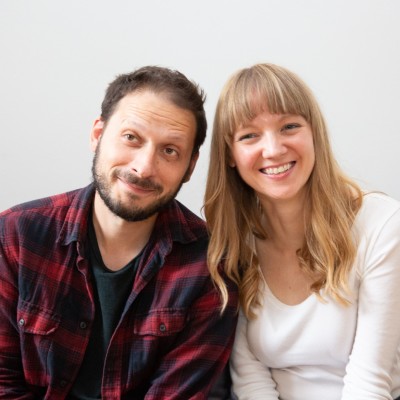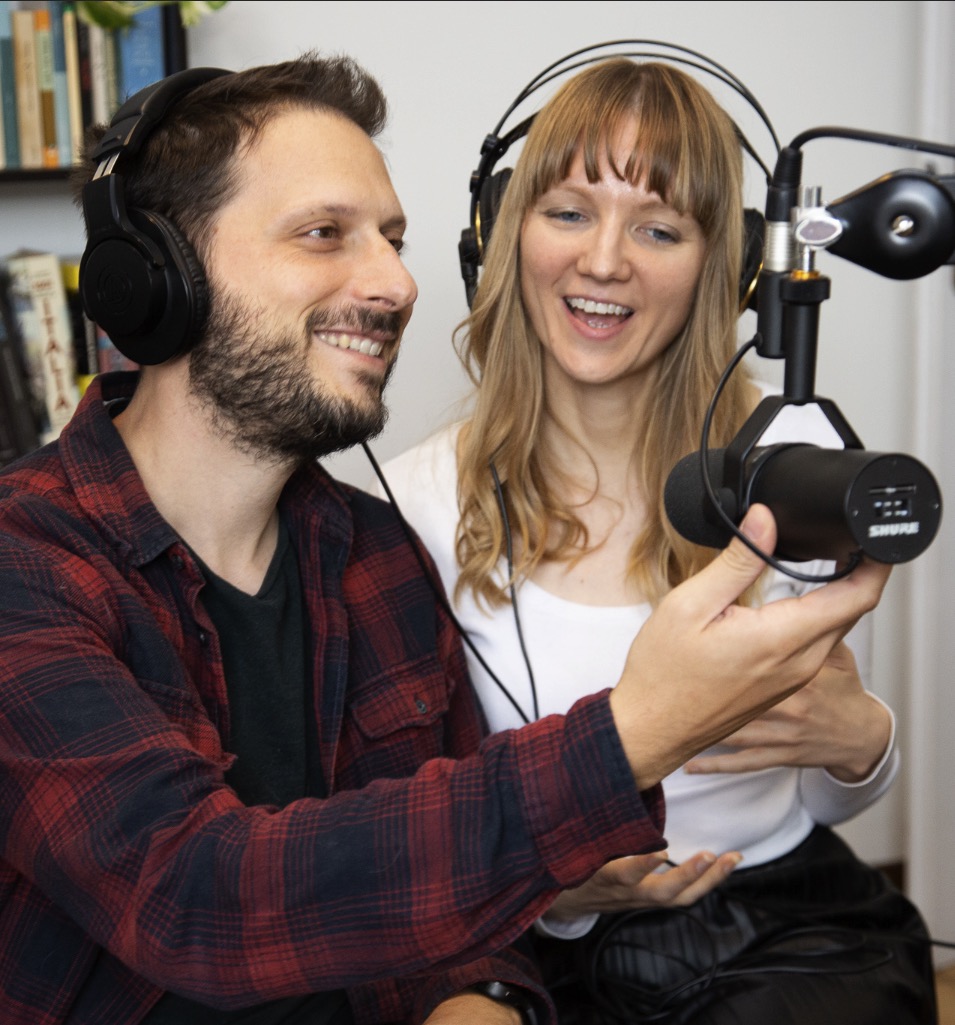Did you know that when Italians go for dinner, they don't have a starter + main course + dessert? They have a different course system, which you’ll need to know about before you order food in Italy. Find out more in this lesson of 5 minute Italian!
To help you remember what you learnt in today's lesson, below you'll find bonus materials like word lists, quizzes and flashcards. But first...
Become a 5-minute Italian member (it's free!)
Learn to speak and understand Italian faster by joining the 5 minute Italian club! When you sign up, you'll get:
- Mini Italian lessons + bonus materials delivered to your inbox.
- Access to the private Facebook group where you can practice chatting in Italian.
- Invites to free speaking workshops.
If you'd like to join us, click here to become a member of 5 Minute Italian.
Bonus Materials
Remember and practice using what you learnt with the bonus materials for today's episode.
Today's Italian words
Possiamo avere? = can we have?
Possiamo avere una bottiglia di pinot grigio? = can we have a bottle of pinot grigio?
Da mangiare? = what would you like to eat? (lit. to eat?)
Per me = for me
Poi = then/next
Antipasto = starter
Primo = first course
Secondo = second course
Dolce = dessert
Forse dopo = maybe later
Qualcos’altro = Anything else?
Una bottiglia d’acqua = a bottle of water
Una bottiglia d’acqua naturale = a bottle of still water
Buon appetito! = enjoy your meal!
Take the Quiz!
How much did you learn? Find out in the 5-minute Italian quiz!
Click here to take the quiz for this episode: How to order food in Italian (part 2)
Italian flashcards
Remember the vocabulary from your 5 Minute Italian lessons by downloading the digital flashcard pack.
- Download the flashcards: How to order food in Italian (part 2)
- Not sure how it works? Click here to watch the tutorial.
Transcript
Please note, this is not a word for word transcript
Katie: Did you know that Italians don’t have starter, main course and dessert? They have a different course system, which you’ll need to know about if you’re going to order dinner in Italy. Find out how to order a meal in 5 minute Italian episode 25.
Ciao a tutti e benvenuti a 5 minute Italian, hi everyone and welcome to 5 minute Italian. I’m Katie…
Matteo: And I’m Matteo. Ciao.
K: And in today’s lesson, we’re going to continue learning how to order a meal in Italian. Let’s get straight into the conversation - listen and see how much you can understand. Don’t worry if some parts are unfamiliar to you, we’ll walk you through each part shortly.
M: Buonasera
K: Buonasera
M: In quanti siete?
K: Siamo in due.
M: Prego….. Che cosa vi porto da bere?
K: Possiamo avere una bottiglia di pinot grigio?
M: Certo. Da mangiare?
K: Per me un antipasto misto. Poi un risotto di pesce.
M: E per secondo?
K: Mmmmm. Forse dopo.
M: Qualcos’altro?
K: Una bottiglia d’acqua naturale.
M: Perfetto, torno subito.
So hopefully you recognised the first few lines of the conversation we learnt last week. We had:
M: buonasera (good evening); in quanti siete (how many of you are there); siamo in due (there are two of us); che cosa vi porto da bere (what would you like to drink?)
K: If this is new to you, or you need a refresher, you can go back and listen to last week’s lesson: How to order food in Italian (part 1)
Matteo: You also heard the waiter said prego, which has lots of different meanings in Italian! In this context, it means “after you” and waiters often say it when they show you to your table.
Katie: Next you heard the phrase possiamo avere una bottiglia di Pinot grigio, which means “can we have a bottle of pinot grigio”
Matteo: Possiamo avere una bottiglia di Pinot grigio?
Katie: Now last week we learnt that posso avere means “can I have”.
Matteo: Right so posso, with an o at the end means can I. To say can we, remove the o and add -iamo. Possiamo.
Katie: Then to say “have” we say avere. So “can I have” is:
Matteo: Posso avere
Katie: And can we have is
Matteo: Possiamo avere
Katie: Next you heard certo, which means "of course" or "certainly".
Then Matteo asked da mangiare? Which literally means “to eat”? It’s a shortened version of “what would you like to eat?” In Italian, waiters often just say “to eat?” da mangiare?
Matteo: Then you heard: per me un antipasto misto.
Katie: Per me means “for me” and it’s a handy little phrase you can use when ordering food and drink. You may have heard the word antipasto before - it means "starter". Misto means mixed - so un antipasto misto means “a mixed starter” and it’s one of my favourite things to order because it’s a great way to try lots of different dishes together.
Matteo: Then you heard poi, un risotto di pesce. Poi means “then” or “next” and risotto di pesce means "fish risotto".
Katie: Next the waiter said: per secondo?. This is interesting because it shows the Italian dining system. So in the UK, we have starter, main course and dessert.
Matteo: But in Italy, it’s different. After the antipasto, we have two main courses. The first dish, called il primo is mostly carbohydrates, like a pasta or rice dish. Then the second dish, called il secondo, is usually protein, like meat, fish or cheese. Then we have the dessert, il dolce.
Katie: When Italians get together for special occasions, like Easter or Christmas, they’ll often eat all of these courses: antipasto, primo, secondo, and dolce. But sometimes it’s very filling and expensive to order both primo and secondo - you may not always have the money or the appetite to order a carbonara followed by a steak!
Matteo: So often Italians often order just the primo or just the secondo. That’s why when the waiter said: per secondo? (for the second dish?) Katie said: forse dopo which means "maybe later".
Katie: Yes, Italians often order the primo first, then decide whether to get the secondo later depending on if they feel like eating another a dish or not. Next, you heard qualcos’altro? Which means “anything else”?
Matteo: Qualcos’altro?
Katie: And I said una bottiglia d'acqua naturale - Una bottiglia d’acqua means a bottle of water. And naturale means still.
Matteo: una bottiglia d’acqua naturale.
Katie: finally, you heard torno subito which means “I’ll be right back”
Matteo: torno subito.
Katie: That’s it for now, all that’s left to say is buon appetito!
K: That’s all we have time for today, thanks for listening. And if you’d like to get more mini Italian lessons delivered to your inbox, don’t forget to subscribe by following the link below. Grazie, and ciao for now, see you next time, or as we say in Italian, alla prossima!
Get more 5-minute Italian
To get more 5 minute Italian, including lessons delivered to your inbox, access to the private Facebook group and invites to speaking workshops, click here to become a 5 Minute Italian member.

